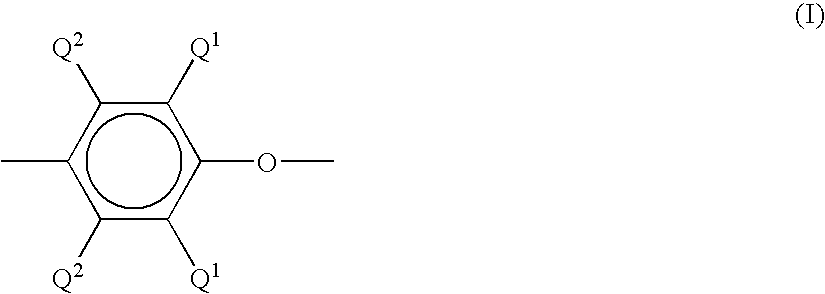Electrically conductive compositions and method of manufacture thereof
a technology of electrical conductivity and compositions, applied in the field of electrical conductivity compositions and methods of manufacture thereof, can solve problems such as mechanical properties decreas
- Summary
- Abstract
- Description
- Claims
- Application Information
AI Technical Summary
Benefits of technology
Problems solved by technology
Method used
Image
Examples
example 1
[0150]This example was undertaken to disperse SWNTs in polycarbonate (PC) and to create a masterbatch of SWNTs in PC. 250 milligrams (mg) of SWNTs obtained from Carbon Nanotechnologies Incorporated was first dispersed in 120 milliliter (ml) of 1,2 dichloroethane by using an ultrasonication horn for 30 minutes. The ultrasonic horn used an ultrasonic processor at 80% amplitude (600 Watts, probe diameter of 13 mm available from Sonics & Materials Incorporated). 30 gms of bis(methylsalicyl)carbonate (BMSC) and 20.3467 gms of bisphenol A (BPA) (mol of BMSC / mol of BPA=1.02) were added to dispersion and SWNT the reaction mixture was again sonicated for 30 minutes. The sonicated mass was transferred into a glass reactor, which was first passivated by soaking the reactor in a bath containing 1 molar aqueous hydrochloric acid solution for 24 hours followed by vigorous rinsing with deionized water. The solvent was dried by heating the glass reactor to 100° C. in presence of flowing nitrogen at...
example 2
[0153]This example was undertaken to disperse SWNTs in PCCD (poly(1,4-cyclohexane-dimethanol-1,4-cyclohexanedicarboxylate)polymer and to create a masterbatch of SWNTs in PCCD. The PCCD polymer was synthesized by melt polycondensation in presence of SWNTs obtained from Carbon Nanotechnologies Incorporated. A slurry of SWNTs (0.24 gm, 1 wt %) was prepared by mixing the SWNTs with 1,4-dimethyl cyclohexane dicarboxylate (14.01 gm, 0.07 moles) (DMCD), 1,4-cyclohexane dimethanol (10.09 gm, 0.07 moles) (CHDM) and 1,2-dichloroethane (50 mL) under sonication as described in example 1. The slurry was transferred to the glass reactor tube. The reactor tube was mounted to the melt polycondensation reactor equipped with side arm, a mechanical stirrer driven by an overhead stirring motor and a side arm with a stop-cock. The side arm is used to purge nitrogen gas as well as for applying vacuum. Initially, the reactor tube was heated under nitrogen to remove the 1,2-dichloroethane and cooled to roo...
example 3
[0157]This example was used to prepared a masterbatch of SWNTs in Nylon 6 during the polymerization of the polyamide. 24.8 gm of ε-caprolactam was taken in a beaker and heated to 90° C. After compound has melted, 250 milligrams (mg) of SWNTs containing about 10 wt % impurities (commercially available from Carbon Nanotechnologies Incorporated) was added to the ε-caprolactam. The mixture was ultrasonicated at the same temperture for half an hour using an ultrasonic processor at 80% amplitude (600 Watts, probe diameter of 13 mm available from Sonics & Materials Incorporated). The dispersion of SWNTs in the molten ε-caprolactam was then transferred to a reactor tube and was kept overnight to allow the SWNT ropes to gel (forming a network). 1.5 gm of aminocaproic acid was then added to the reactor and caprolactam was polymerized to nylon-6 by ring-opening polymerization, under nitrogen with slow stirring, for 9 hours at 260° C.
PUM
| Property | Measurement | Unit |
|---|---|---|
| notched Izod impact strength | aaaaa | aaaaa |
| electrical surface resistivity | aaaaa | aaaaa |
| diameters | aaaaa | aaaaa |
Abstract
Description
Claims
Application Information
 Login to View More
Login to View More - R&D
- Intellectual Property
- Life Sciences
- Materials
- Tech Scout
- Unparalleled Data Quality
- Higher Quality Content
- 60% Fewer Hallucinations
Browse by: Latest US Patents, China's latest patents, Technical Efficacy Thesaurus, Application Domain, Technology Topic, Popular Technical Reports.
© 2025 PatSnap. All rights reserved.Legal|Privacy policy|Modern Slavery Act Transparency Statement|Sitemap|About US| Contact US: help@patsnap.com



